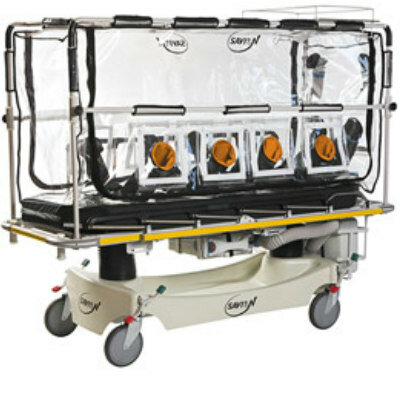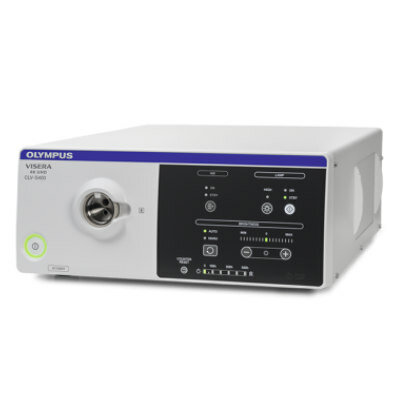AI Study Sees through Walls and Occlusions
|
By HospiMedica International staff writers Posted on 28 Jun 2018 |

Image: A new study shows how artificial intelligence can identify human motion and posture, even through walls (Photo courtesy of CSAIL).
A new study describes how artificial intelligence (AI) can be used to analyze radio signals bouncing off people's bodies so as to study posture and movement, even through walls.
The Massachusetts Institute of Technology (MIT, Cambridge, MA, USA) RF-Pose project is based on a deep neural network approach that parses wireless signals in the WiFi frequencies in order to estimate human poses and postures. One of the stumbling blocks in the process is that teaching AI networks to identify visual patterns relies on human annotation; but since radio signals cannot be annotated, the researchers used a state-of-the-art vision model to provide cross-modal supervision.
This involved collecting thousands of examples of both wireless device data and matched photographic images of people doing activities like walking, talking, sitting, opening doors, and waiting for elevators. They then used the images to extract stick figures, which they showed to the AI neural network along with the corresponding radio signal. The combined data enabled the AI system to learn the association between the radio signal and the stick figures of the people in a given scene. Once trained, the network used only the wireless signal for pose estimation.
The results showed that when tested on visible scenes, the radio-based system is almost as accurate as the vision-based system used to train it. But unlike vision-based pose estimation, the radio-based system can also estimate two-dimensional (2D) poses through walls, despite never being trained on such scenarios. The researchers suggest the system could monitor patients with Parkinson's disease, multiple sclerosis (MS), and other issues, as well as provide an added security for seniors at home by monitoring falls, injuries, and changes in activity patterns. The study was presented at the annual conference on Computer Vision and Pattern Recognition (CVPR), held during June 2018 in Salt Lake City (UT, USA).
“Just like how cellphones and Wi-Fi routers have become essential parts of today's households, I believe that wireless technologies like these will help power the homes of the future,” said senior author Professor Dina Katabi, PhD, of the MIT Computer Science and Artificial Intelligence Laboratory (CSAIL). “We've seen that monitoring patients' walking speed and ability to do basic activities on their own gives healthcare providers a window into their lives that they didn't have before, which could be meaningful for a whole range of diseases.”
Related Links:
Massachusetts Institute of Technology
The Massachusetts Institute of Technology (MIT, Cambridge, MA, USA) RF-Pose project is based on a deep neural network approach that parses wireless signals in the WiFi frequencies in order to estimate human poses and postures. One of the stumbling blocks in the process is that teaching AI networks to identify visual patterns relies on human annotation; but since radio signals cannot be annotated, the researchers used a state-of-the-art vision model to provide cross-modal supervision.
This involved collecting thousands of examples of both wireless device data and matched photographic images of people doing activities like walking, talking, sitting, opening doors, and waiting for elevators. They then used the images to extract stick figures, which they showed to the AI neural network along with the corresponding radio signal. The combined data enabled the AI system to learn the association between the radio signal and the stick figures of the people in a given scene. Once trained, the network used only the wireless signal for pose estimation.
The results showed that when tested on visible scenes, the radio-based system is almost as accurate as the vision-based system used to train it. But unlike vision-based pose estimation, the radio-based system can also estimate two-dimensional (2D) poses through walls, despite never being trained on such scenarios. The researchers suggest the system could monitor patients with Parkinson's disease, multiple sclerosis (MS), and other issues, as well as provide an added security for seniors at home by monitoring falls, injuries, and changes in activity patterns. The study was presented at the annual conference on Computer Vision and Pattern Recognition (CVPR), held during June 2018 in Salt Lake City (UT, USA).
“Just like how cellphones and Wi-Fi routers have become essential parts of today's households, I believe that wireless technologies like these will help power the homes of the future,” said senior author Professor Dina Katabi, PhD, of the MIT Computer Science and Artificial Intelligence Laboratory (CSAIL). “We've seen that monitoring patients' walking speed and ability to do basic activities on their own gives healthcare providers a window into their lives that they didn't have before, which could be meaningful for a whole range of diseases.”
Related Links:
Massachusetts Institute of Technology
Latest AI News
- AI-Powered Algorithm to Revolutionize Detection of Atrial Fibrillation
- AI Diagnostic Tool Accurately Detects Valvular Disorders Often Missed by Doctors
- New Model Predicts 10 Year Breast Cancer Risk
- AI Tool Accurately Predicts Cancer Three Years Prior to Diagnosis
- Ground-Breaking Tool Predicts 10-Year Risk of Esophageal Cancer
- AI Tool Analyzes Capsule Endoscopy Videos for Accurately Predicting Patient Outcomes for Crohn’s Disease
Channels
Critical Care
view channel
Deep-Learning Model Predicts Arrhythmia 30 Minutes before Onset
Atrial fibrillation, the most common type of cardiac arrhythmia worldwide, affected approximately 59 million people in 2019. Characterized by an irregular and often rapid heart rate, atrial fibrillation... Read more
Breakthrough Technology Combines Detection and Treatment of Nerve-Related Disorders in Single Procedure
The peripheral nervous system (PNS) serves as the communication network that links the brain and spinal cord to every other part of the body. It consists of two parts: the somatic nervous system, which... Read moreSurgical Techniques
view channel
Hydrogel-Based Miniaturized Electric Generators to Power Biomedical Devices
The development of engineered devices that can harvest and convert the mechanical motion of the human body into electricity is essential for powering bioelectronic devices. This mechanoelectrical energy... Read moreWearable Technology Monitors and Analyzes Surgeons' Posture during Long Surgical Procedures
The physical strain associated with the static postures maintained by neurosurgeons during long operations can lead to fatigue and musculoskeletal problems. An objective assessment of surgical ergonomics... Read more.jpg)
Custom 3D-Printed Orthopedic Implants Transform Joint Replacement Surgery
The evolving field of 3D printing is revolutionizing orthopedics, especially for individuals requiring joint replacement surgeries where traditional implants fail to provide a solution. Although most people... Read more
Cutting-Edge Imaging Platform Detects Residual Breast Cancer Missed During Lumpectomy Surgery
Breast cancer is becoming increasingly common, with statistics indicating that 1 in 8 women will develop the disease in their lifetime. Lumpectomy remains the predominant surgical intervention for treating... Read morePatient Care
view channel
Surgical Capacity Optimization Solution Helps Hospitals Boost OR Utilization
An innovative solution has the capability to transform surgical capacity utilization by targeting the root cause of surgical block time inefficiencies. Fujitsu Limited’s (Tokyo, Japan) Surgical Capacity... Read more
Game-Changing Innovation in Surgical Instrument Sterilization Significantly Improves OR Throughput
A groundbreaking innovation enables hospitals to significantly improve instrument processing time and throughput in operating rooms (ORs) and sterile processing departments. Turbett Surgical, Inc.... Read more
Next Gen ICU Bed to Help Address Complex Critical Care Needs
As the critical care environment becomes increasingly demanding and complex due to evolving hospital needs, there is a pressing requirement for innovations that can facilitate patient recovery.... Read moreGroundbreaking AI-Powered UV-C Disinfection Technology Redefines Infection Control Landscape
Healthcare-associated infection (HCAI) is a widespread complication in healthcare management, posing a significant health risk due to its potential to increase patient morbidity and mortality, prolong... Read moreHealth IT
view channel
Machine Learning Model Improves Mortality Risk Prediction for Cardiac Surgery Patients
Machine learning algorithms have been deployed to create predictive models in various medical fields, with some demonstrating improved outcomes compared to their standard-of-care counterparts.... Read more
Strategic Collaboration to Develop and Integrate Generative AI into Healthcare
Top industry experts have underscored the immediate requirement for healthcare systems and hospitals to respond to severe cost and margin pressures. Close to half of U.S. hospitals ended 2022 in the red... Read more
AI-Enabled Operating Rooms Solution Helps Hospitals Maximize Utilization and Unlock Capacity
For healthcare organizations, optimizing operating room (OR) utilization during prime time hours is a complex challenge. Surgeons and clinics face difficulties in finding available slots for booking cases,... Read more
AI Predicts Pancreatic Cancer Three Years before Diagnosis from Patients’ Medical Records
Screening for common cancers like breast, cervix, and prostate cancer relies on relatively simple and highly effective techniques, such as mammograms, Pap smears, and blood tests. These methods have revolutionized... Read morePoint of Care
view channel
Critical Bleeding Management System to Help Hospitals Further Standardize Viscoelastic Testing
Surgical procedures are often accompanied by significant blood loss and the subsequent high likelihood of the need for allogeneic blood transfusions. These transfusions, while critical, are linked to various... Read more
Point of Care HIV Test Enables Early Infection Diagnosis for Infants
Early diagnosis and initiation of treatment are crucial for the survival of infants infected with HIV (human immunodeficiency virus). Without treatment, approximately 50% of infants who acquire HIV during... Read more
Whole Blood Rapid Test Aids Assessment of Concussion at Patient's Bedside
In the United States annually, approximately five million individuals seek emergency department care for traumatic brain injuries (TBIs), yet over half of those suspecting a concussion may never get it checked.... Read more
New Generation Glucose Hospital Meter System Ensures Accurate, Interference-Free and Safe Use
A new generation glucose hospital meter system now comes with several features that make hospital glucose testing easier and more secure while continuing to offer accuracy, freedom from interference, and... Read moreBusiness
view channel
Johnson & Johnson Acquires Cardiovascular Medical Device Company Shockwave Medical
Johnson & Johnson (New Brunswick, N.J., USA) and Shockwave Medical (Santa Clara, CA, USA) have entered into a definitive agreement under which Johnson & Johnson will acquire all of Shockwave’s... Read more














